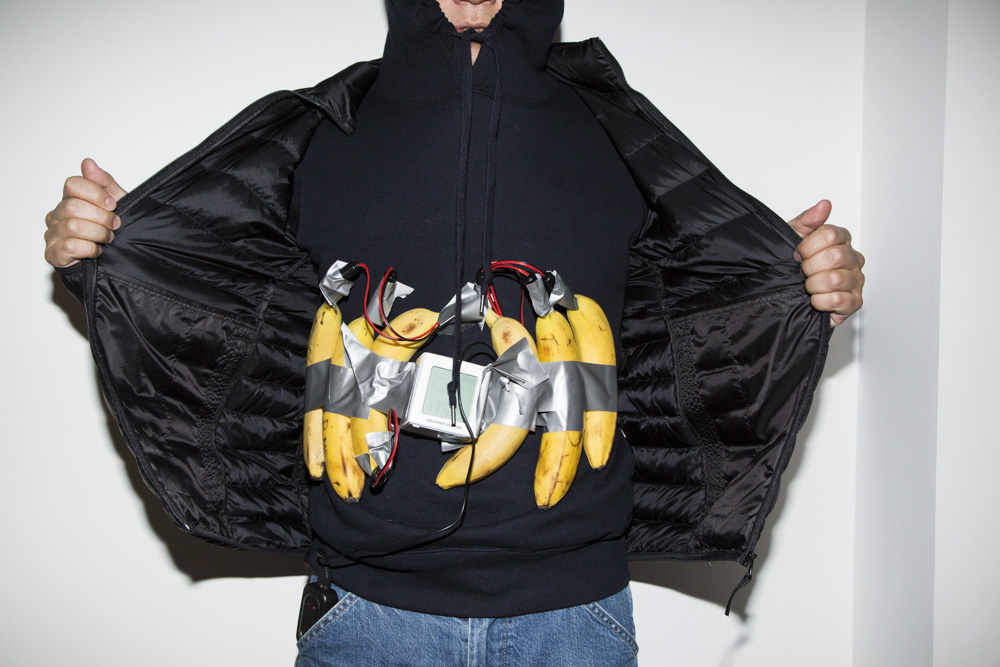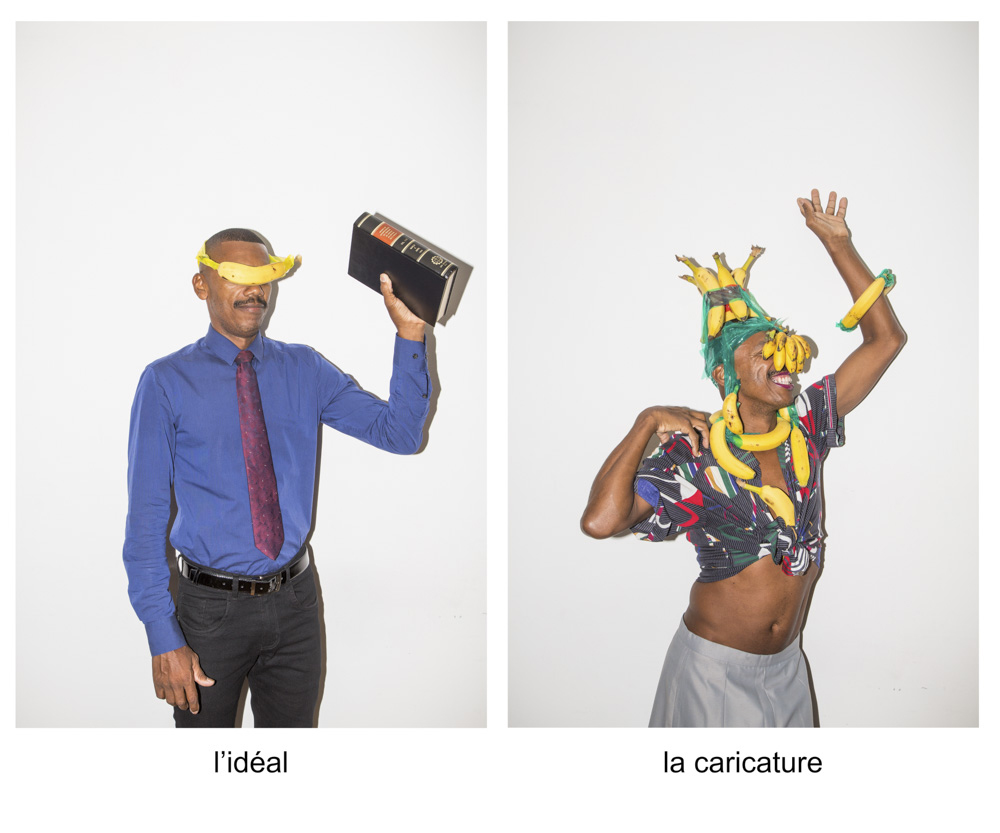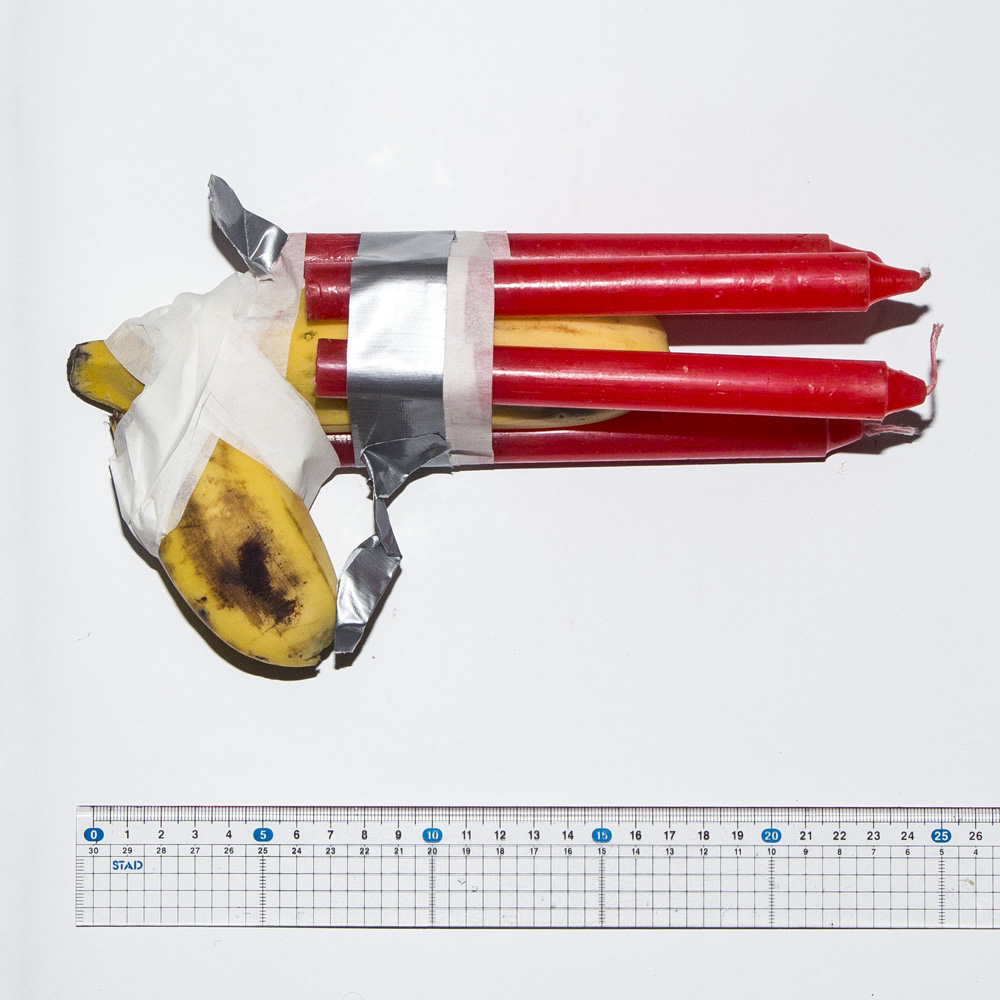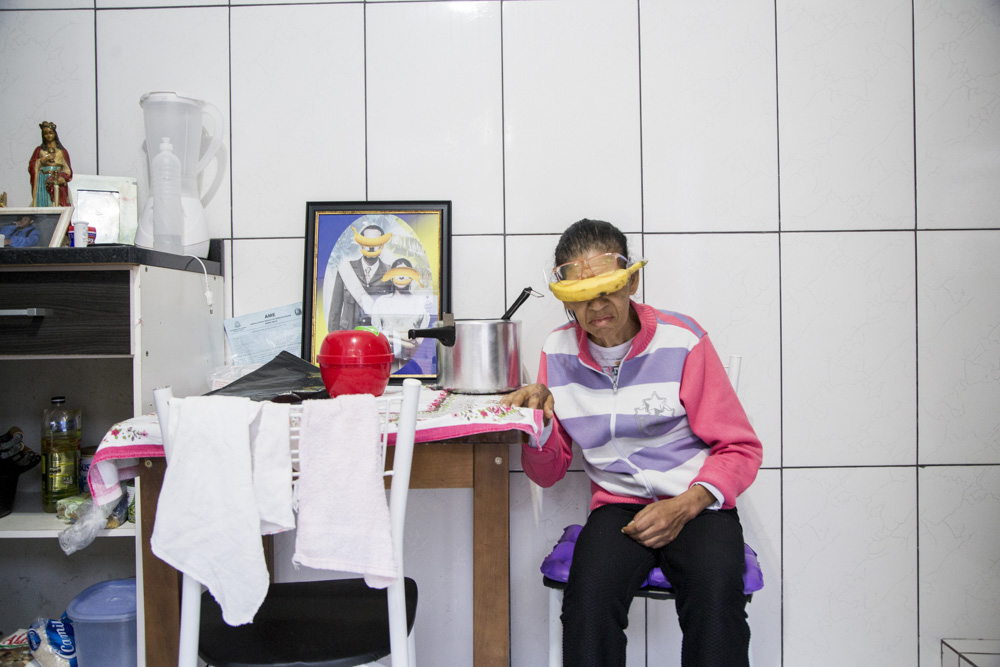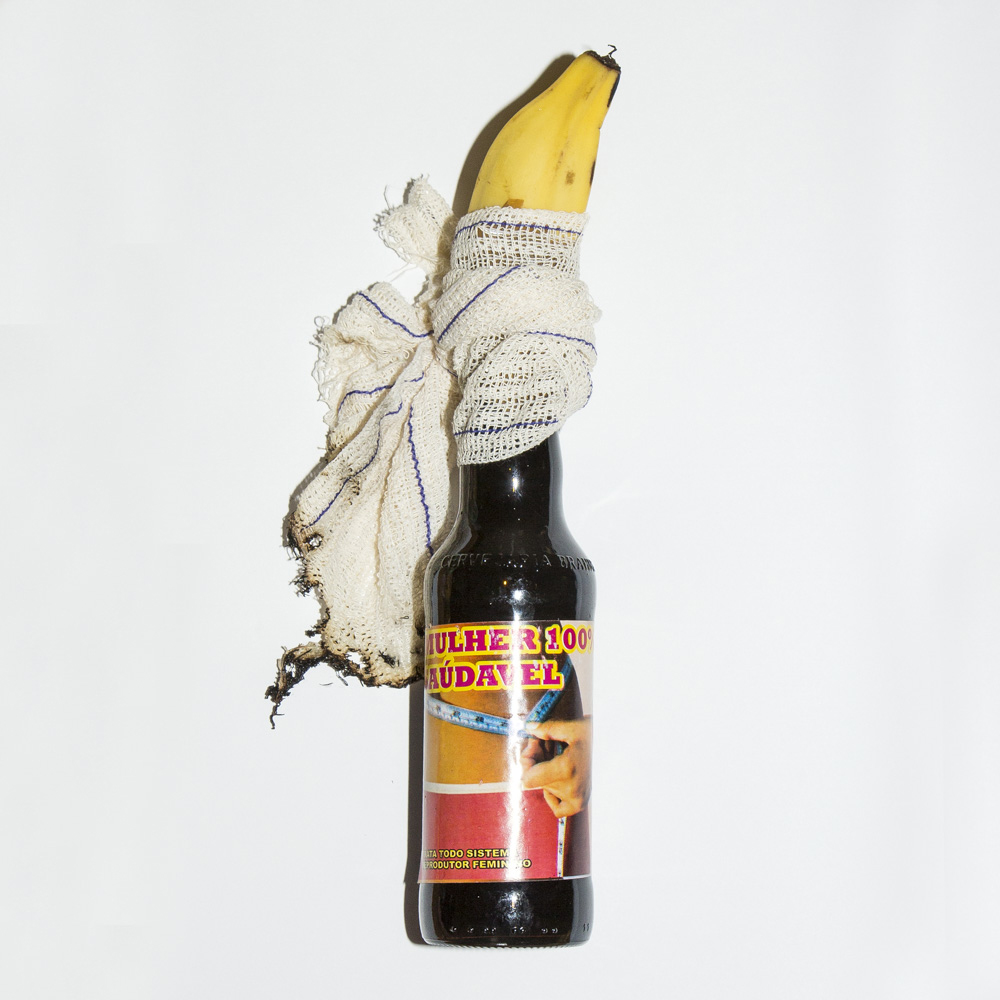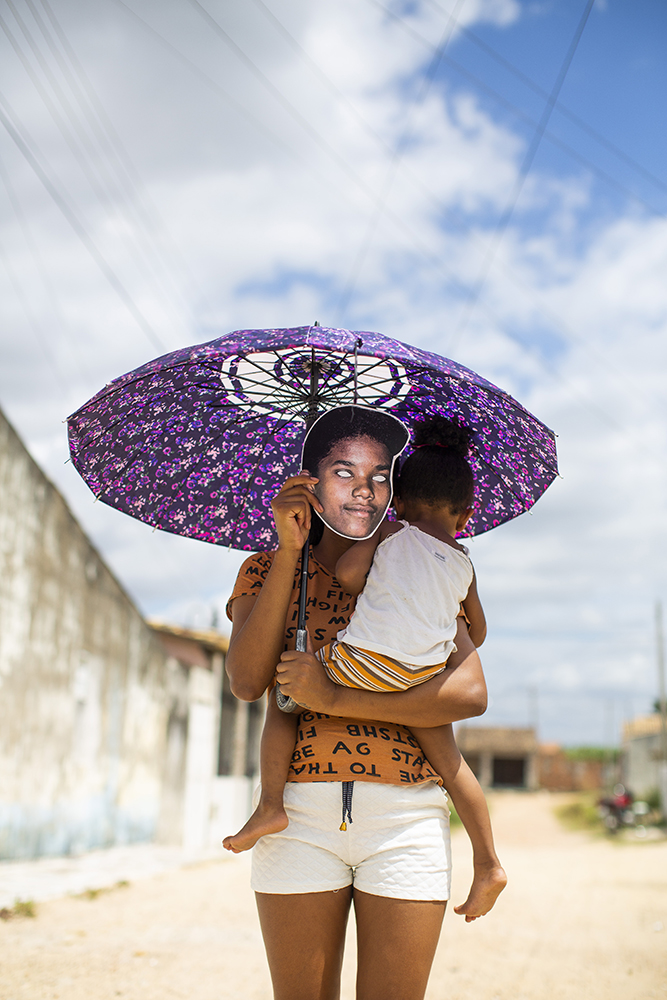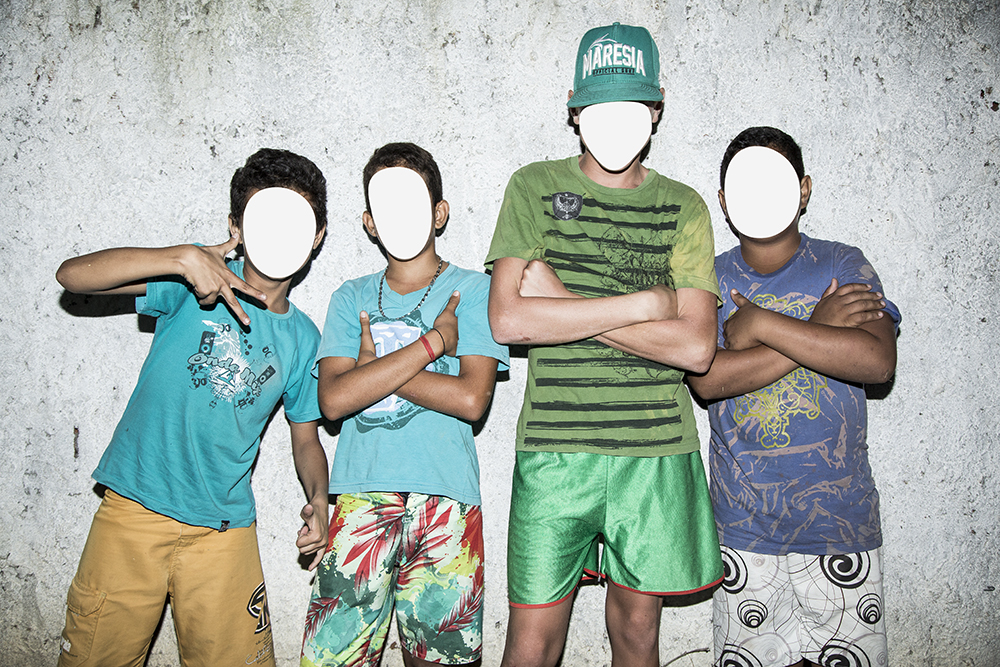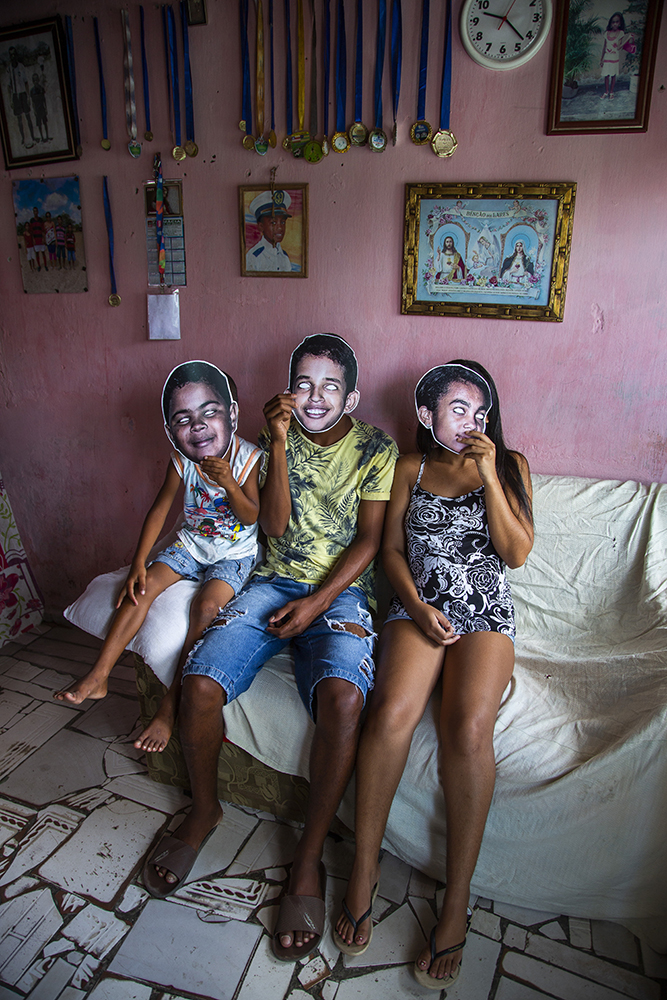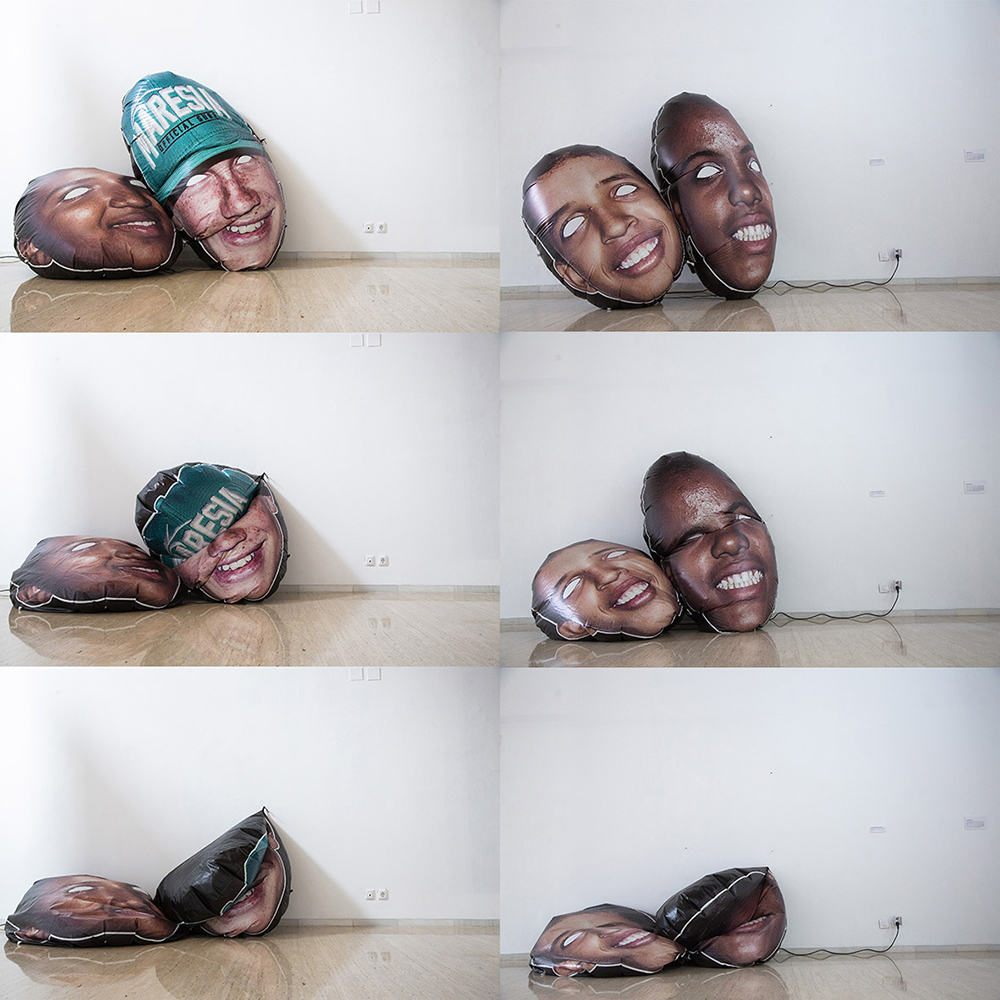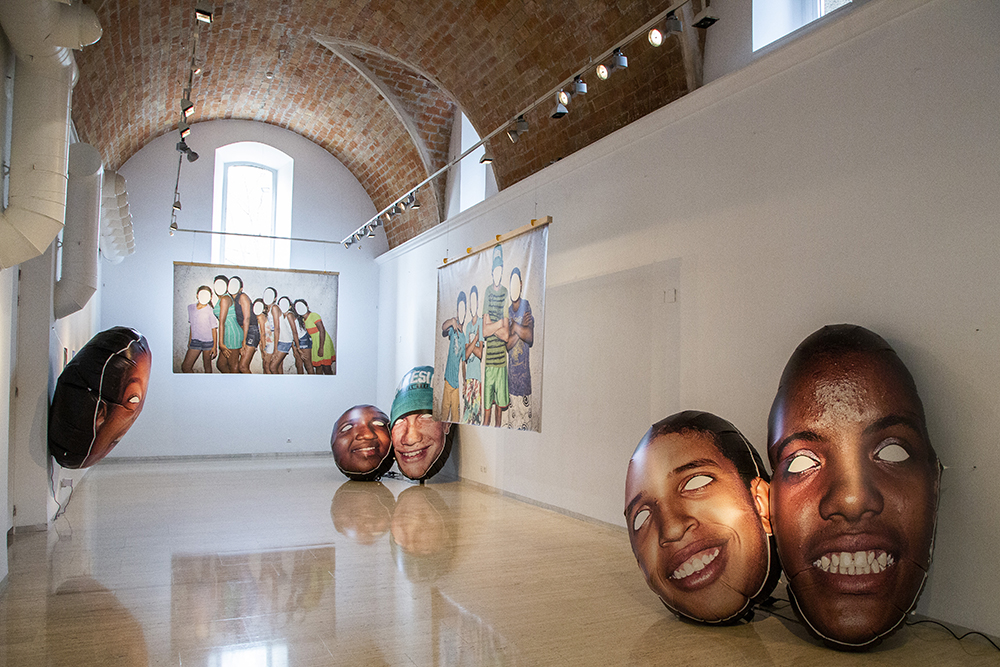Shinji Nagabe: Banana Republic, Restitution, and Restoration
Japanese-Brazilian artist Shinji Nagabe uses his multicultural heritage as the basis for his work, bringing identity and customs to it. His images seem full of fantasy, while at the same time being pervaded by reality, questioning the relationship of humans with society and the environment. Nagabe currently lives in Madrid, Spain. His artistic practice consists of a thoughtful observation of reality, usually followed by an intervention on his subjects informed by the concept underlying the work. He is thorough in his research, and he is aware of the social, cultural, and political realities in which we live in. The aesthetics, characterized by strong colors and playfulness, allow for sophisticated humor. But as we go deeper into the images, collectively and individually, we start to uncover the many meanings, layers, and emotional statuses that led to this result, based on the notorious empathy between him and his subjects, something truly constitutive of Shinji’s work which enriches it in an unparalleled way.
The first work I’d like to show you is Banana Republic. The synopsis for the work is as follows:
“Recent worldwide events seem to have suspended our own reality. Banana Republic represents this state of political and social disillusionment and disenchantment. The surrealist realism of the series is based on real facts, extrapolated to the same level of fancy that can be found in recent speeches. The state that Shinji Nagabe created is under the yoke of a cruel and populist dictator. The banana is used to blind and censor, while resistant groups use it to make weapons and build bombs. This visceral response leads to guerrilla warfare between the rebels and the retrograde and conservative government. The social and political transformations that have recently been felt in many countries are reflected in Banana Republic. Our immersion in this fictive republic and its harsh tropical fantasy makes us reflect on the role we play in the decisions made within our communities and the ones we may have to make in the future.”
This empathy is central to his latest project Restitution, which was exhibited at Barcelona’s Centre Cívic Can Basté until March 20th. In this work, he returns to Itabaianinha, a city located in Brazil’s northeast, where he had worked with children seven years before to create the first part of the project. Shinji’s purpose was to catch up with those same children – now late teenagers or young adults -who dreamed of being rich and famous, like soccer players, models, or Telenovela (Brazilian soap operas) actors and actresses, and find out what happened to those dreams. It is a touching work that is all the more exciting and mysterious in an exhibition context, which is shown here.
The Restitution of the Face
Shinji Nagabe embodies the essence of syncretism. Strangeness is part of his gaze on his future vital. Multiple histories and diverse geographies flow into his being in the world. Back to the Brazilian regions who once inhabited does so feeling the earth shake as if it were an extension of their body of him.
It is difficult to treat with dignity the representation of destitute and badly injured children and adolescents and much more difficult even to do it with a subtle and intelligent sense of humor. Nagabe’s portraits can look like a party, motley, light-filled, saturated with color.
In Restoration he restores faces. Seven years have passed since he portrayed the youth of Itabaianinha veiling their faces with fabrics and flowers that transformed them into fantastic, dreamlike beings, like characters from stories of tropical surrealism.
In group portraits, he preserves the secret of the faces with the dynamism of the bodies forcing the viewer to exercise empathy. Any face can be that of one of those teenagers stripped of their dreams of success and fame according to the models that society imposes on them. They dreamed of being princesses or champions, protagonists of stories of love and luxury, although they ended up being teenage mothers, bricklayers, or unemployed.
The face has been considered a part of the body that revealed the soul. The portrait serves to give presence to the absent and here it resurfaces as a presence of the forgotten of the earth, using the artist the mask to restore dignity to the people portrayed. Shinji Nagabe has the virtuosity of ensuring that a playful installation retains the character of denunciation of the conditions of the inhabitants of the depressed areas of his native Brazil.
The balloons that often evoke happy anniversaries here feature smiling mouths with very bright teeth and concentrate all the expression but have empty eye sockets tightening the emotions that unleash. They are an emotional orography that rises slightly. For a moment they have become in the protagonists of the party, of their own history, and can revive a hope that still lurks in some hidden corner of its most intimate essence.
This accompanying text to the exhibition was written by Spanish independent curator and art critic Carmen Dalmau.
He has been the winner and finalist of many prestigious awards, such as the Prix Discovery Louis Roederer 2019 – Finalist (France – Arles, 2019); Prix Maison Blanche 2018 Premier Prix (France – Marseille, 2018 ); Portfolios Maison Europeenne de la Photographie (France – Paris, 2018 ); Prix HSBC pour la Photographie 2018– Finalist (France – Paris, 2018 ); Prix de la Photographie Gavea – Grand Prix (Brazil – Rio de Janeiro 2016 ) and Photo art BCN 2016 – Grand Prix (Spain – Barcelona 2016 ). He has exhibited collectively and individually, such as in RE Vueltas – Can Baste (Spain – Barcelona, 2021); Prix Discovery Louis Roederer, Les Rencontres de la Photographie d’Arles (France – Arles, 2019); Alma – Can Baste (Spain – Barcelona, 2018); CHÃO – CERO Gallery (Spain – Madrid, 018); Espinha [Spine] – ArtDealProject Gallery (Spain – Barcelona, 2017).
Shinji has published one book, Espinha, by Le Bec en L’air Editions (France-Marseille, 2019 ), that you can order here.
Follow him on Instagram: @shinjinagabe
Posts on Lenscratch may not be reproduced without the permission of the Lenscratch staff and the photographer.
Recommended
-
Salua Ares: Absense as FormNovember 29th, 2025
-
Ricardo Miguel Hernández: When the memory turns to dust and Beyond PainNovember 28th, 2025
-
Pamela Landau Connolly: Columbus DriveNovember 26th, 2025
-
KELIY ANDERSON-STALEY: Wilderness No longer at the Edge of ThingsNovember 19th, 2025
-
Jackie Mulder: Thought TrailsNovember 18th, 2025

